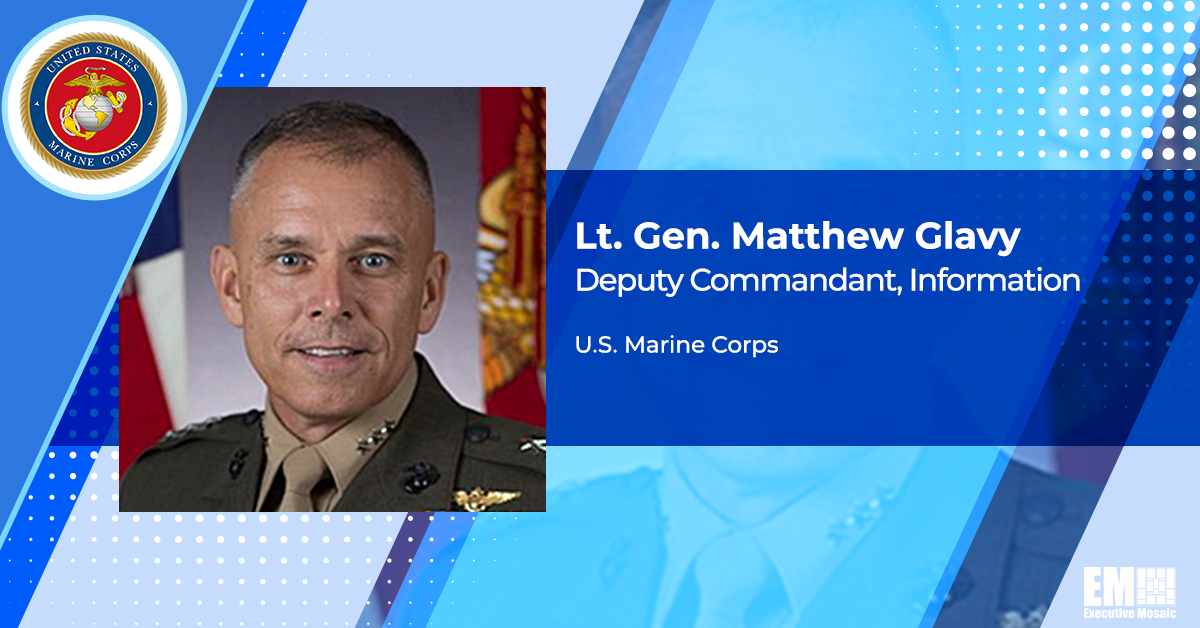Recent technological advancements have drastically altered the way the U.S. military operates in the modern battlespace, which holds a growing number of threats to the nation’s information advantage.
To keep up with the rapid nature of modern technology transformation and maintain battlefield superiority, welcoming change and the opportunities it provides is crucial, according to Lt. Gen. Matthew Glavy, deputy commandant for information at the U.S. Marine Corps.
“Those who cannot change and those who are unwilling to change are not able to embrace it and include risk. It goes for every military organization in history – if you cannot change and really understand and mitigate risk, you will not do well,” Glavy said during his keynote address Wednesday at ExecutiveBiz’s Information Warfare Forum.
For the Marine Corps, fully addressing the constant need for technological evolution in the modern era begins with the service branch’s culture, which, said Glavy, was founded on the ideas of honor, courage and commitment and carries a legacy of harnessing new technologies to create advantages on the battlefield.
One early USMC effort to leverage the benefits of change was the adoption of the helicopter, which Glavy said provided a new understanding of the battlefield and a “unique opportunity” to experiment with previously unexplored techniques.
“It is the trade craft and the innovation that went into those Marines with honor, courage and commitment that gave them an advantage to show up to this fight and do what they had to do,” said Glavy. “Part of the culture has to be the young men and women that go forward. We have to give them an edge.”
When considering present technological demands, these elements of Marine culture must persist – but with a more constant evaluation of what they need, where they need it and when they need it, according to Glavy.
“Every 90 days, my life changes, and my assumptions have to be reevaluated. That is how fast many of these developments are happening,” he emphasized.
With the never-ending transformation of the modern battlespace, said Glavy, there is always something out there that may shatter any of these assumptions. The wide array of rapidly developing technologies, such as artificial intelligence and supercomputers, have made it a requirement for the USMC to more consistently assess its capabilities, he said.
To solidify this idea, the service branch recently created the Marine Corps Doctrinal Publication 8, which details its approach to implementing information warfighting functions. This document, Glavy said, provides a foundation for the identification of future changes that must be made.
He emphasized that in line with the Marine Corps’ work to adapt to the shifting modern warfighting landscape, MCPD 8 was written as a “living, breathing” document meant to determine how the service branch considers information and serve as a springboard for future technology considerations.
“We have to start somewhere and grow from there,” he said. “We are sometimes slightly behind, but we are taking advantage of this great opportunity to learn, horizontally integrate and achieve best practices.”
These efforts, said Glavy, must heavily consider outcomes and what specifically the USMC needs to attain an advantage over adversaries.
“We need to be that much quicker, that much more resilient and that much more capable in a degraded environment. We must have this advantage – we need a systems overmatch,” said Glavy.

To facilitate further discussion of emerging technologies and their impacts, the Potomac Officers Club is hosting its 9th Annual Defense R&D Summit on March 23, which will connect numerous public and private sector leaders to consider Department of Defense technology priorities and R&D challenges. To learn more and register to attend, please visit the Potomac Officers Club events page.




